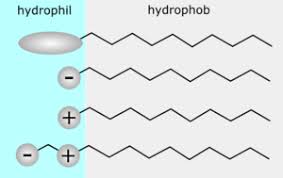The kinetics of the acid hydrolysis reaction of Fe(II)-bis(salicylidene) complexes
were followed under pseudo–first-order conditions ([H+] >> [complex]) at 298 K. The ligands
of the studied azomethine complexes were derived from the condensation of salicylaldehyde
with different five α-amino acids. The hydrolysis reactions were studied in acidic medium at
different ratios (v/v) of aqua–organic mixtures. The decrease in the dielectric constant values of
the reaction mixture enhances the reactivity of the reaction. The transfer chemical potentials
of the initial and transition states (IS–TS) from water into mixed solvents were determined
from the solubility measurements combined with the kinetic data. Nonlinear plots of logkobs
versus 1/D (the reciprocal of the dielectric constant) suggest the influence of the solvation
of IS–TS on the reaction reactivity. Furthermore, the acid hydrolysis reactions were screened
in the presence of different concentrations of cationic and anionic tensides. The addition of
surfactants to the reaction mixture accelerates the reaction reactivity.


